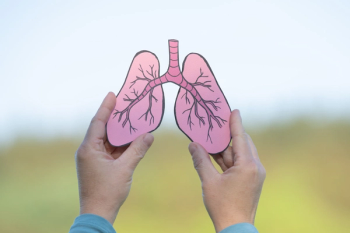
Why Pharmacists Should Check Out the Beers List
No, this is not a rundown of adult beverages but a handy guide to medications that are potentially inappropriate for older adults.
One of my secrets for having drug information readily available is to keep medication lists. I am referring to organizing drugs in lists specific for my work situation. For example, I have lists of drugs that need to be renally dosed, that are removed during dialysis, that cause thrombocytopenia, that cause QTc prolongation, that interact with coumadin, and that require monitoring of blood levels.
Occasionally, I get asked by a doctor to review the patient's drug profile and tell him or her which drugs are potentially causing a problem. This may seem like a time-consuming task if the patient is on several medications, but I simply look at my printed list or recall my mental list and compare it with the patient's medication list. I do not look up each drug. This is a trick that many mentalists use. I visually recall the list, and I see details of the printed list in my mind’s eye. I learned this trick in pharmacy school to help me do well on tests. I also like to organize information in charts, and then I visually recall the chart in my mind to get my answer.
I encourage everyone to keep lists that are important to them, based on their job description and daily tasks. One list that I think every pharmacist can benefit from, especially community pharmacists, is the Beers list1. No, it is not a list of adult beverages that pharmacy students drink while on spring break. This list includes medications that are potentially inappropriate for older adults because of ineffectiveness or a high risk of adverse events.
The Beers list was initially developed by an expert consensus panel in 1991 to target nursing home residents. It was revised in 1997, 2003, 2012, and most recently, 2015.
How many times has someone asked you to recommend an antihistamine or a pain medication? I think of the Beers list and the age of the person. However, there is no age limit. It is all based on judgment. Many of these precautions and warnings can apply to younger people as well.
Has anyone asked you which medications cause or worsen constipation? Or which medications can worsen brain fog? Or worsen benign prostatic hyperplasia (BPH), delirium, dementia, falls, gastrointestinal (GI) ulcers, heart failure, incontinence, insomnia, kidney disease, Parkinson's disease, seizures, or syncope? The answers to all these questions are neatly organized and verified by experts on the Beers lists.
The Beers list even puts a rating on how important the recommendations are. QE stands for the quality of evidence, and that is given a rating of low, moderate, or strong. SR indicates strength of warning, and the ratings are strong or weak. I like that system, because then I can see how serious the warning or contraindication is. A recommendation with a strong, strong rating is something I take very seriously. A low, weak rating is something I might mention as a possible source of problems, but I would not lose too much sleep over it.
Within the Beers list are 5 sublists or tables with various themes.
These are:
- Table 1 is the longest list, and it is subdivided into several mini lists. This table is about inappropriate drugs for older adults, such as anticholinergics, anti-infectives, antiparkinsonian agents, antispasmodics, antithrombotic, cardiovascular, central nervous system drugs, endocrine drugs, GI drugs, GU drugs, and pain medications.
- Table 2 lists drugs to avoid in certain disease states, such as in the setting of BPH, delirium, dementia, falls, GI ulcers, heart failure, incontinence, insomnia, kidney disease, Parkinson's disease, seizures, and syncope. This is my favorite table on the list, because it answers the question, what makes this medical condition worse?
- Table 3 lists drugs that have special instructions, such as dose limitations and monitoring.
- Table 4 lists drug-drug interactions that are 2015 very significant and why.
- Table 5 lists drugs that need dose adjustments based on renal function. This list is mainly home medications and long-term nursing home medications. It does not include intravenous drugs used in the hospital setting. And that is why I think this list benefits the community pharmacists the most. It pertains mostly to daily living-type drug.
- Let me recommend this downloadable pocket version. It’s condensed, concise, and easy to memorize.
Let me recommend the
It is also important to know that a drug will often appear on the Beers list, and then it will fall out of favor and not be used as frequently. Many drugs on this list are now obsolete in favor of better, newer, and safer alternatives. Being a drug on the Beers list is not a good thing. It is similar to a criminal's mugshot appearing in the newspaper. So, do not be surprised if there are drugs on this list that you do not recognize.
You can even put this link in your cellphone for easy access. Technology and lists can help us all feel well prepared to answer drug-related questions.
Reference
1. American Geriatrics Society 2015 Beers Criteria Update Expert Panel. American Geriatrics Society 2015 updated Beers criteria for potentially inappropriate medication use in older adults. J Am Geriatr Soc. 2015;63(11):2227-46. doi: 10.1111/jgs.13702.
Newsletter
Stay informed on drug updates, treatment guidelines, and pharmacy practice trends—subscribe to Pharmacy Times for weekly clinical insights.
















































































































































































































